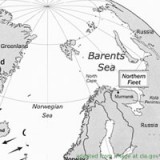Gazprom sends first LNG tanker via Northern Sea Route

MOSCOW. Dec 5 (Interfax) – The Ob River liquefied natural gas (LNG) tanker, chartered by the Gazprom Group (RTS: GAZP), successfully completed the world’s first LNG shipment via the Northern Sea Route on Wednesday, the Russian gas giant reported.
The tanker, which departed from Norway’s Hammerfest Port on November 7, has arrived at the regasification terminal at Tobata Port in Japan and delivered a batch of Gazprom Group LNG to Japanese customers.
During its passage along the Northern Sea Route, from November 9 to 18, the Ob River tanker was accompanied by nuclear icebreakers belonging to Federal State Unitary Enterprise Atomflot, which were guided by two pilots. At the first stage of the voyage in the Barents and Kara Seas, there was almost no ice. At the second stage, from the Vilkitsky Strait to the Bering Strait, the tanker encountered newly formed ice up to 30 centimeters thick.
“The trip was executed without any accidents and fully on schedule. The trip’s success was ensured by the Orb River tanker’s professional crew and the high-quality support of the ice pilots, captains and crew of the 50 Years of Victory, Russia and Vaygach icebreakers and the port staff of FSUE Atomflot and the Administration of the Northern Sea Route of the Russian Federal Sea and River Transport Agency,” Gazprom’s statement said.
Also onboard the tanker was a working group of the Krylov State Research Center and OJSC Sovcomflot, which studied the characteristics of the vessel’s ice channeling during periods of intensive ice formations in the Arctic waters.
The tanker was loaded after carrying out an empty journey from Japan to Europe earlier in October.
“The Orb River tanker’s two trips through the Northern Sea Route in a single navigation completely confirmed the technical and commercial suitability of the Northern Sea Route for international LNG shipments. First-class icebreaker services and vessel escort, reduced freight delivery times, fuel savings, reduced losses from LNG evaporation, increased volumes of gas deliveries, reduced carbon dioxide emissions into the environment and a lack of risks of conflict and pirate attacks during passage – all of these together present a very attractive and reliable solution for international LNG trade, taking into account the implementation of Russian Arctic LNG projects. The Orb River tanker’s successful trip allows us to expect the full use of the Northern Sea Route for supplies of Russian LNG both to countries in the Asia-Pacific region and to the European market,” Gazprom reported.
The Northern Sea Route, also known as the North East Passage, stretches from the Atlantic to the Pacific Ocean along the northern coast of Siberia from Novaya Zemlya to the Bering Strait. Modern icebreaker services make it possible to navigate heavy-duty, ice-class tankers three to four months out of the year. This strategic route slashes the time it takes to get from Northern Europe to North East Asia by almost 40% in comparison with routes that pass through southern seas and oceans through the Suez and Panama Canals.
